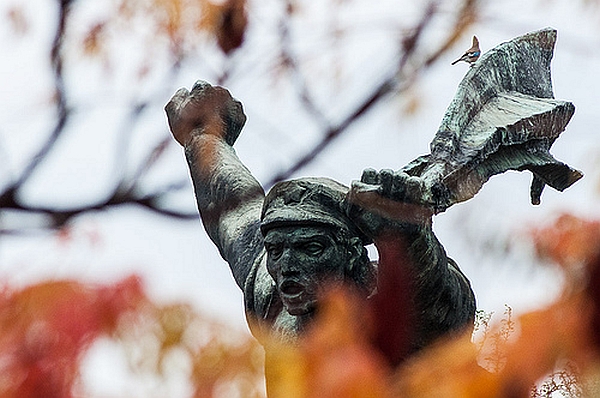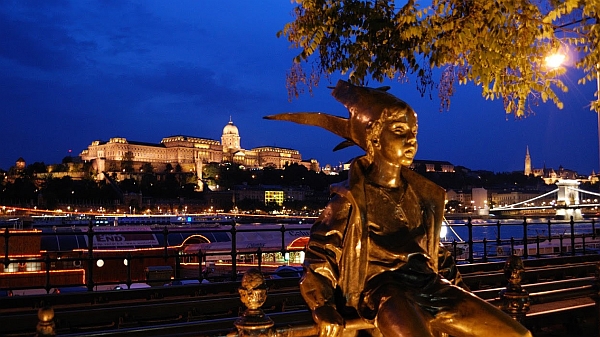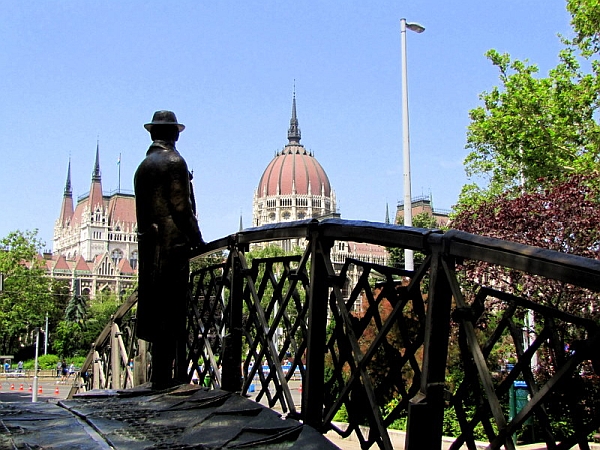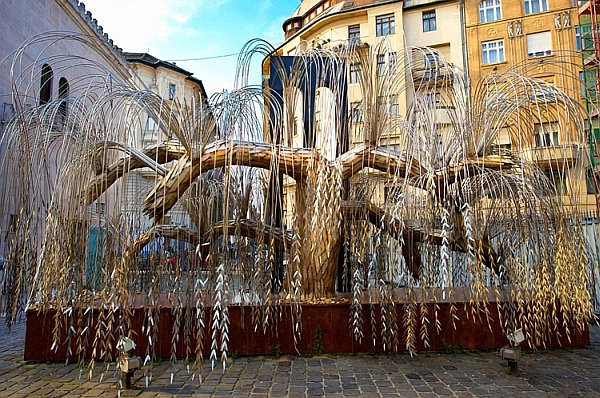By now, most people have forgotten that the city was littered with statues to Lenin, Marx, Engels, and the other representations of the Communist times. If you have some recollection of them and are wondering where they have disappeared to, here is your answer. In the aftermath of 1989, they were not wanted any longer being constant reminders of difficult times. A plan was conceived for an outdoor museum, Memento Park, created in 1993 and expanded since then when funds allow.

Besides the 42 statues, you will find a lot of symbolism. As you enter the park, the statues are in three sections, each with a theme. Each section if viewed from above would be symbolic of an eternity symbol; Communism was meant to last all eternity. However, if you are standing at the front gate and follow the path forward, you will see a brick wall ahead of you. Communism ran into a brick wall. I fear that I was under the impression that the dry ugly grounds were from lack of care, but my guide explained this is a metaphor for the ugly realities of Communism.
The new exhibition hall created from an old army barrack has fascinating pictures of the past with English translations. A movie-viewing area continually shows an uncovered authentic training film for spies. It runs 50 minutes.
Located in the XXII district (extreme Southern Buda) on Balatoni út (00 36 1 424-7500; www.mementopark.hu), the park is a memorial to an era, to despotism, and to times of fear. The tiny museum gift kiosk sells Communist-era memorabilia, such as T-shirts with flamboyantly modern, humorous sayings, medals, and cassettes of Red Army marching songs.
The park is open daily from 10am to dusk and admission is 1,500 Ft for adults or 1,000 Ft for students. To get to the park, take either bus no. 7E or 173E from Ferenciek tere to Kelenföldi pályaudvar, the end of the line. Buy round-trip tickets for 480 Ft for the yellow Volán bus for a 10-minute ride to the park; ask the driver where to get off. The Volán bus is not a city bus; passes and transit tickets are not valid. The other options are to take bus 150 from Kosztolányi Dezső tér or take the convenient direct bus service from Deák tér for 3.675 Ft (admission ticket to the park included). The timetable varies by season, but the 11am departure remains constant with an additional run at 3pm in July and August. Personally, the guided tour totally changed our opinion and appreciation for the park, so we highly recommend it. Tours on-site for those who come by public transport are 1,200 Ft.

Other statues have replaced those in this park, while others are in spaces not formerly graced with artwork. One statue that just about every tourist sees is The Little Princess, but without a plaque, it is often mistaken for a jester. It sits on the railing on Vigadó tér, a straight shot down to the river from Vörösmarty tér. You will see by her knees that she has been rubbed in admiration and luck for some time. The sculptor is László Marton, who also created the incredible statue of Attila József, the famous Hungarian poet, as he gazes toward the Danube by Parliament. Sculptor Imre Varga created the statue you will find on the tiny Vértanúk tér across from Parliament. He also created one of the pieces in the park.

The man on the bridge is Imre Nagy, Hungary’s prime minister during the ’56 revolution, who tried to build a democratic Hungary by negotiating with the Soviets and gaining Western support. His place on the bridge is a metaphor for being caught in the middle. He was later taken prisoner by the Soviets and executed. Varga is also the artist who created the Weeping Willow in the courtyard of the Great Synagogue. And back again to Vigadó tér, you will find the fairly new Girl with a Dog, a playful statue of a child playing ball with her canine friend, by artist Dávid Raffay. All of these artists are contemporary, still living and working at their craft.
